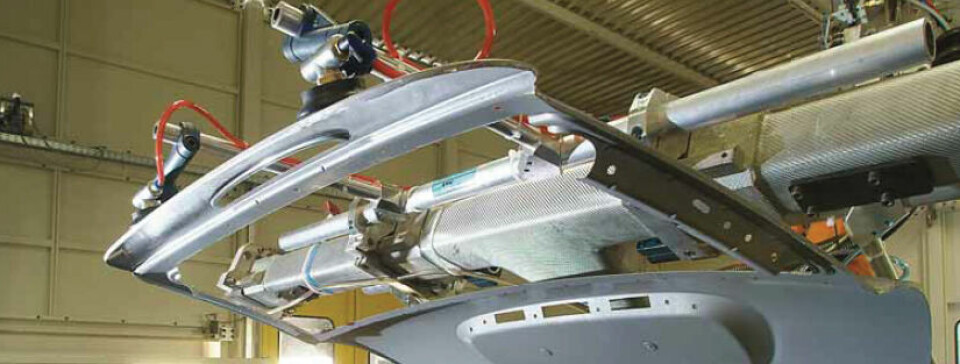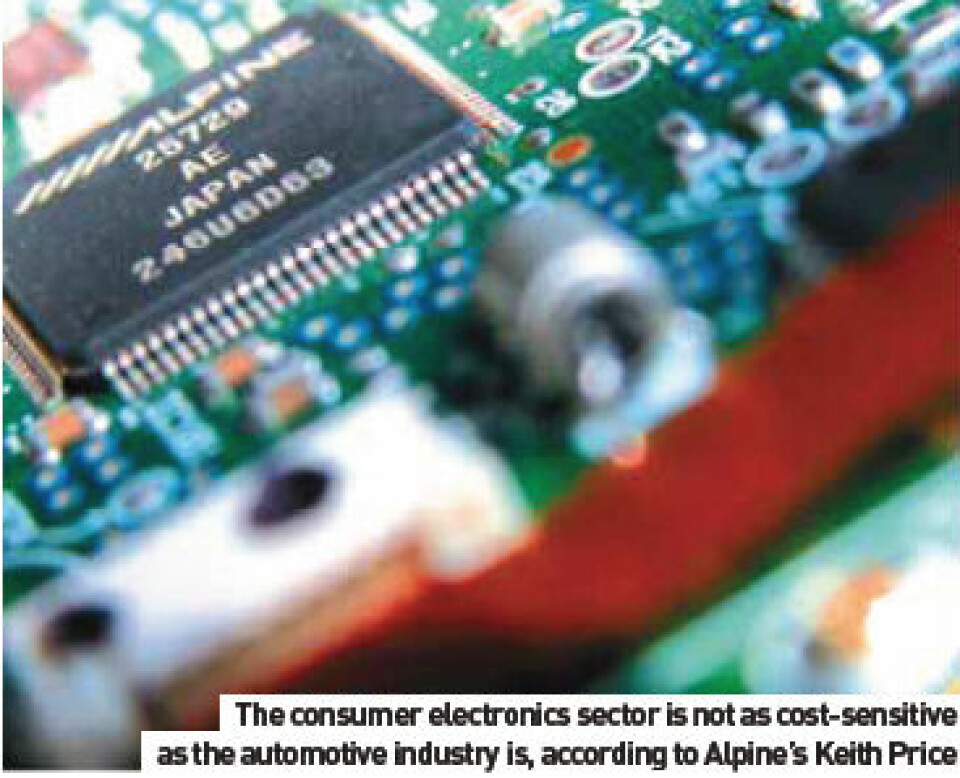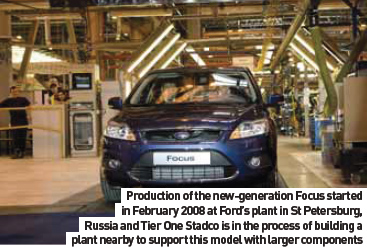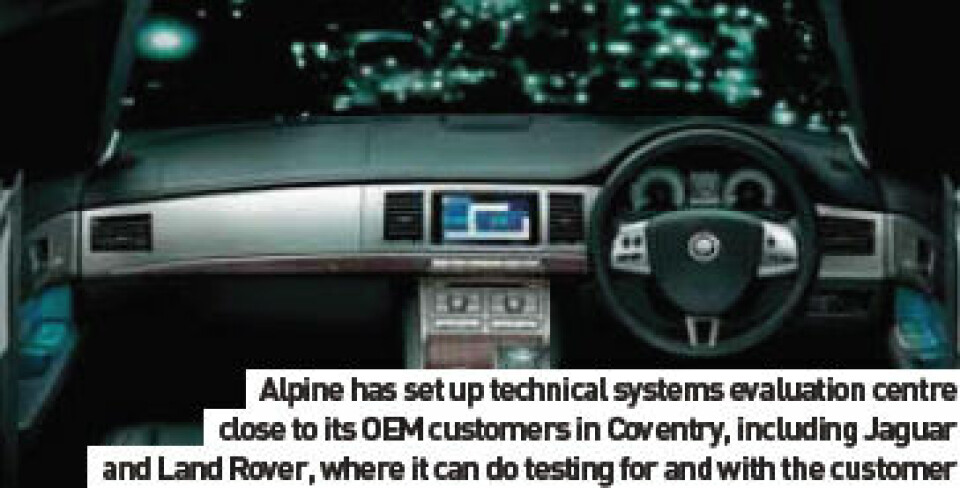Tier suppliers under pressure

The economic downswing means that more than ever, Tier Ones in the automotive sector are fighting for business, but there are a few success stories out there
The ongoing, and much written about, downward pressure on prices, the relentless consolidation of the supply chain, greater collaboration on vehicle platforms and burgeoning globalisation have all left their mark on a somewhat battered Tier One community.
Automotive OEMs are taking their fair share of the heat too. You only have to study the debacle caused by the bankruptcy of US Tier One Plastech –it filed for Chapter 11 protection in the US Bankruptcy Court in Detroit in February – and the problems it has caused GM (including line closures) to appreciate the difficult landscape that these companies operate in. Usually there is not universal consensus among Tier Ones, but when you ask them what the biggest challenge is that they face, everyone agrees – price.
“It is always price, it never changes,” says Dermot Sterne, Sales and Marketing Director of Stadco. “For quality levels and delivery performances, the expectation has been at a consistently high level for so long that it is almost a given. The price pressure increases relentlessly each year. Contracts don’t last forever; a contract term is about five or six years, so it is not as though you are decreasing the price of the same part for twenty years. But it is a requirement to become more efficient every year.”
Cost of raw materials is relentless
The price consciousness of the automotive industry is a sentiment echoed by Keith Price, OEM Business Manager of Alpine in the UK. “I think it’s fair to say that the automotive industry is the most cost-sensitive industry,” he explains. “I don’t think that is the case in consumer electronics. The volumes are high in that sector but the product replacement cycles are much shorter. Look at mobile phones – the manufacturers bring a new one out every six months. We might make a design change on a product to save 50 cents a unit with the knowledge that we will save that amount on every unit over the next three years, so it is worth doing. He says the cost price is enormous: “We are constantly trying to fight that and reduce our costs so that we can continue to be nominated for new business and to make a profit on that business once we are in production.” Steel maker Corus is perhaps not a traditional Tier One supplier in that it supplies raw materials rather than manufacturing components, but nonetheless, the company is exposed to the same pressures as other more conventional Tier Ones.
Busby tells AMS, “We have this battle where people try to keep the cost of the vehicle down or even reduce it, but this battle is becoming more difficult as time goes on. There are always differences in timings between deals, so there is always somebody who loses out and the commercial restraints are very strong indeed.”

The supplier base is shrinking
Stadco supplies body-in white components – from stampings and sub-assemblies to complete body-in-whites. The company has noticed that the leading trend is a move to larger sub-assemblies. “The outsourcing of the vehicle continues and we are involved in the ‘real core’ of the vehicle, the body shell,” he explains. “So it wasn’t one of the first systems or modules to be outsourced – what the OEMs did was to outsource some of the components, the stampings and assemblies, but we have noticed that it has been increasing. Now it is common that we would be building sub-assemblies.” Along with the downward price spiral, the shrinking supplier base is something that Sterne is all too familiar with. “When we grew as a Tier One supplier, you get to the position where, with certain customers, we are on the ever-decreasing list of preferred suppliers. Then you get the opportunity to consolidate other smaller components from smaller suppliers and it is possible to become a module supplier.
For example, Stadco recently announced that it will be opening a plant in 2009 in Russia, to supply doors, better known as body closure assemblies. This is an example of purchasing smaller parts from others, but fundamentally, Stadco will be stamping the large parts and combining our large stampings with other smaller body parts to create an assembly, in this case for the Ford Focus. “Our integration with the OEM puts us in a good place,” Sterne says. “It gives you the opportunity to show that you are the best in what you do, but you never get the contract that is going to last you through three or four models. You always have to show with each new model that you remain competitive and are giving the customer best value for money with each model.
“If you are already there you have a head start, as you are already embedded with the OEM’s system. A key point is that you often get the opportunity to be involved in the programme from a very early stage. So your knowledge about the programme and the needs and wants of the customer are almost certainly more than some suppliers looking in enviously,” he adds.
Because of this greater upward integration with the OEM and downwards through the extended supply chain, Tier Ones have had to become more proficient at collaborative efforts. The result is a greater level of visibility of systems, components and indeed processes. This is something that Sterne believes has developed over recent years. “It is not dramatic, but there is steady progress so that now you do get programmes where it may be difficult to tell the supplier from the customer. You get a chance to be integrated with each others’ systems and procedures.”
Assembly integration
If Stadco operates at the front end of the manufacturing process in the bodyshop, then Alpine, which supplies audio, visual and navigation equipment to Honda, Jaguar, Land Rover and Aston Martin in the UK is at the other end, in final assembly.

“Exactly what we supply varies by customer,” says Keith Price. “For Honda, we provide a completely integrated unit, which we call an AVN (audio-visual navigation). In one box you have the display screen, navigation computer and the tuner/CD and amplifier. For other customers like Jaguar, Volvo, Land Rover, there tends to be a distributed architecture which has a separate tuner, CD and amplifier and it is purely driven by the philosophy of the customer that we are dealing with.”
When OEMs look for an entire dash sub-assembly, including the audio and navigation content, Alpine slips down the chain and become a Tier Two supplier, which brings its own problems. “We would supply head units to instrument panel integrators, who then do a complete build of the whole instrument panel which is then delivered as a fully-built unit to the vehicle maker,” he adds. Stadco’s Sterne is happy that as a European supplier, the company has largely been uninvolved in the US debacle. “I am sure that pricing is part of that, that Tier Ones have come under such financial pressures, that they fall over. I would say that what we have observed in Europe is that all the OEMs want to shrink their supply base quite dramatically. If you are on the supplier list, that’s great, but the list is getting smaller,” he says. He continues, “We have noticed in recent years they are always going to retain competition within the market. They might try to get down to ten major body-in-white suppliers in Europe, but within that ‘shortlist’, there would be two or three suppliers who have the same area of expertise, thus introducing healthy competition.”
Life’s a batch
The evolving manufacturing model from automotive OEMs that moved away from the traditional batch delivery system, to initially just-in-time and more recently just-in-sequence delivery, has impacted Stadco as much as any other Tier One. The Ford Focus is a good example. “The larger stuff we supply and we have a plant in Germany and one being built in Russia to support this model,” Sterne says.
He explains that this model “requires you to be fairly close to fill your capacity. In Germany, it is a dedicated plant for Ford but in Russia (St Petersburg) it is close enough to Toyota, Nissan, Ford and GM that we can easily supply those OEMs from one plant - should they want us to, I should add! In the UK, we have some very large stamping facilities and clearly, that is more geared to batch supply to several customers from one plant.
“It’s all about the right business model for the customer and for Stadco that drives our decisions. Outsourcing of major body-in-white sub-assemblies is a strategy that involves many variables. Complexity is perhaps the major thing, with two or three variants being built on the same production line becoming more common,” he adds.
With its mix as Tier One direct supplier and involvement in integration as a Tier Two supplier, Alpine has been somewhat shielded from the drive for sequenced deliveries. “We always deliver in batches and the variation is the size of the batch, which differs from customer to customer,” Price explains. “However it is true that the quantities are lower than in previous years because with the whole methodology of just-in-time, it tends to be deliveries typically twice a week, whereas 15 years ago it might have been every two weeks.” Sterne believes that this is a positive thing, in that often the vehicle makers do a collection, or what is referred to as ‘milk runs’, in which they have trucks that go to a number of suppliers to pick up a small quantity of each product which they take to the factory. The products are then sequenced at the factory.
With the continued integration of entertainment, communications and navigation systems within a common platform, it’s no surprise that Alpine sees collaboration as a key driver in the sector. “If you went back 15 years, we produced a component or system and supplied it and the vehicle maker bought it and put it in the car, whereas now, because of the complexity of infotainment systems and the level of integration, we have to work more closely with them (manufacturers).”
Getting up close and personal
“What we have done in that respect is to have technical facilities close to the customer, so rather than the manufacturing location, we have brought the development support close to the customer. In Coventry, for example, we have built a systems evaluation centre where we can do a lot of testing for and with the customer; we have done so in that particular location because it is close to Jaguar and Land Rover in particular. We have done similar things in other markets. We have a very similar evaluation centre in Stuttgart and we have another one in Detroit.”
As Alpine’s components and assemblies are somewhat smaller than the large pressings that Stadco and Corus produce, the company has not felt the need to locate themselves closer to their OEM customers. “Typically the people who have put factories for supplier parts right next to the vehicle maker are the ones who make really big parts – the transmission and instrument panel for example,” Price says. “We haven’t done that. We have continued to manufacture in low-cost based locations, typically Eastern Europe or the Far East. We don’t manufacture anything in the UK.”
Marty McQuade, General Manager of DuPont Automotive Systems, says that in five years in this role, he has learned how important it is for a global organisation to keep looking down the road. “In any situation, where the business environment changes as rapidly as it’s changing in automotive, you absolutely have to have a comprehensive and very detailed global strategic planning and marketing process,” he explains.

“As a leader, you need to understand the macroeconomics, not just in the country, but in the region. What are the changes in industry demographics and technology, and, in our business, what is changing in the types of vehicles that are being built?” he says. Over the past decade, the globalisation of the auto industry has drawn DuPont Automotive Systems into diverse regions, including Eastern Europe, Brazil, China and India. Each new market presents a host of challenges for McQuade and his leadership team, but he says there are a number of requirements that are universal for success, regardless of the market you are looking to broach: you must have local connections within the country and you must have a deep understanding of local customs, customers, politics and logistical challenges. Also, any person you send abroad on an assignment must have the same in-depth knowledge you do — if not more so.
Consolidation could be the new trend
On the other hand, a stamping plant involves massive equipment that cannot readily be moved, so although the plants themselves are designed with flexibility in mind, once a location is chosen, it is difficult to change. “We [Stadco] have to pick our opportunities carefully; our plant in Russia is an example. There wouldn’t be a whole lot of opportunity around the world – probably some in India and China – where the forecasted growth in manufacturing in one metropolitan area is so strong that the model to put a large stamping line is sufficiently strong to outweigh the risks. We are very excited to have a large stamping plant in an area where car production is growing rapidly.”
As for the fortune, Sterne predicts more of the same: downward pressure on prices, globalisation and a continual shrinkage of the supplier base. “I think that there will be more consolidation,” he says. “There will be fewer bigger suppliers on the main customer lists and I think that the companies who survive will be the ones that are willing and able to follow their customers around the world to these newly-developing markets.
“To seize these opportunities, like Russia when they come along, and at the same time in the traditional home markets, you have to contribute to the whole system, which is trying to reduce the cost of building cars. I don’t think that the traditional markets will disappear anywhere near as quickly as some suggest, but to make that happen we are all going to have to be fairly fit and aggressive,” he concludes.


